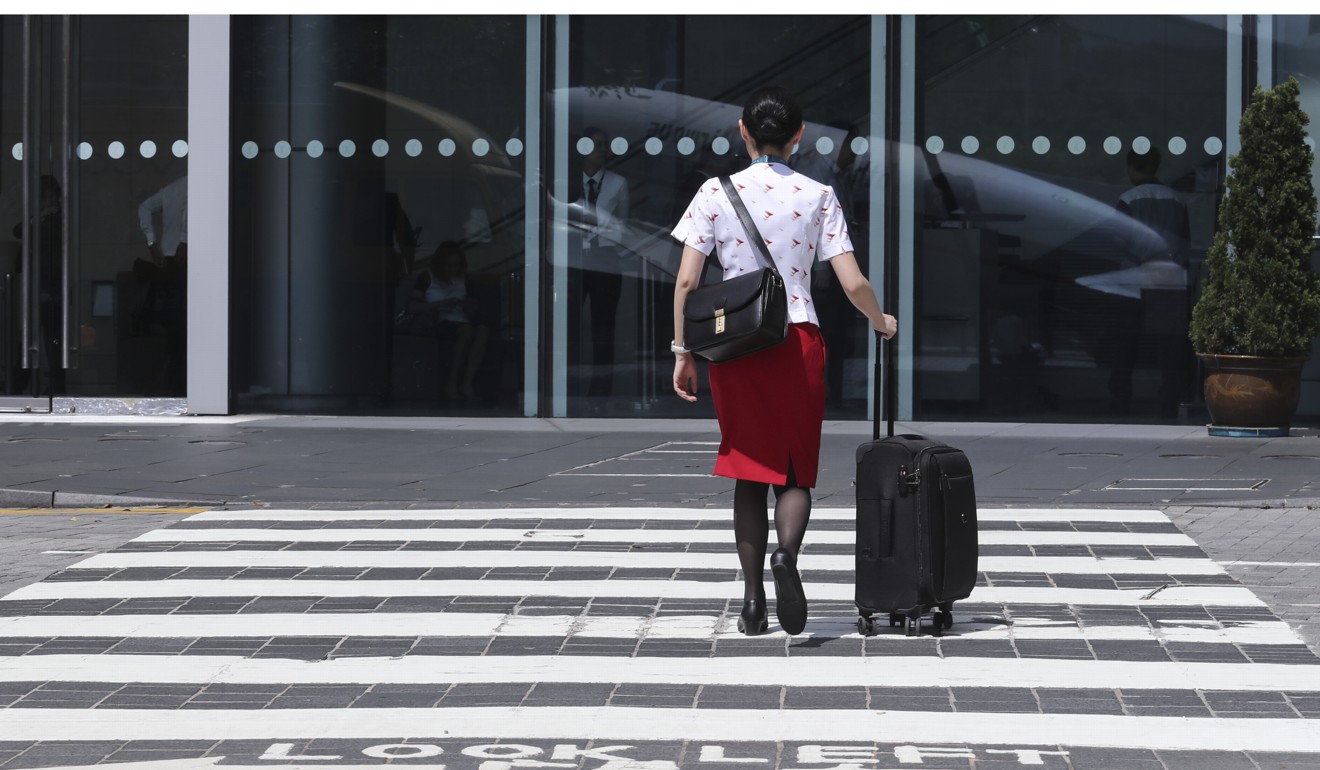
Cheap flights from Hong Kong? Cathay Pacific again faces budget airline question and CEO Rupert Hogg treads carefully
Issue has long dogged Cathay Pacific amid intense price war in Asia, as low-cost carriers chip away at market share and Middle Eastern and Chinese airlines lure travellers with cheaper long-haul tickets
Will Cathay Pacific Airways launch a budget airline or won’t they? Hong Kong’s flagship airline once again faced this question at the aviation industry’s annual summit in Sydney last week.
Its CEO Rupert Hogg was cautious: “We are not blinkered in looking at all of these [low-cost] models and how they are developing. We can learn the lessons from them if there are lessons to be learned.
“We’ll make that decision if and when we get to a point where we can execute against it and we think it’s the right one.”
Last month, the airline’s executive director Paul Loo Kar-pui, would only repeat a line management had used before.
“Never say never,” was Loo’s comeback to media queries.

This issue has long dogged Cathay amid an intense price war among airlines in Asia, as low-cost carriers chip away at their market share and Middle Eastern and Chinese airlines lure travellers with cheaper long-haul tickets.
Cathay Pacific says it would not think about adding a new budget carrier until at least 2024 by the time the third runway is ready at Hong Kong International Airport. Until such a time, the airport is all but full to add more new flights. In 2017, the airport handled 73 million travellers.
Some full-service airlines have launched budget carriers to woo new travellers and cater to price-conscious ones, while preserving their premium brand.
Has Cathay finally made breakthrough on pilot cutbacks deadlock?
But earlier this year, Cathay chairman John Slosar referred to advice he received from a former United Airlines’ CEO and said he was convinced the airline should look at how to compete better rather than “go down the path of setting up all these different airlines”.
On the sidelines of the International Air Transport Association (IATA) conference in Australia, Hogg said Cathay had been closely watching the response to budget airlines globally and “whether they gain market share, whether they are making money”.
With Cathay now carrying as many as 438 people per flight on routes also served by budget carriers, Hogg was asked whether this meant it would always prefer larger planes to maximise its take-off and landing slot at busy airports. Budget carriers typically use planes that can carry up to 186 passengers.
Hogg said the airline and its subsidiary Cathay Dragon already used larger planes for peak period travel between Hong Kong and Shanghai and smaller planes at quieter times, to “give passengers the combination of availability, capacity and frequency”.
“It’s not quite as binary as big is better even if the airport is relatively crowded,” he said.
Cathay is also keenly aware of the need to woo a new generation of passengers.
IATA expects 7.8 billion people to travel in 2036, double today’s number. More than half of that growth will come from the Asia-Pacific region, with 2.1 billion new passengers taking to the skies, increasing the market size to 3.5 billion travellers.

“There is no doubt that the low-cost carrier model is price stimulatory and encourages people to travel,” Hogg said.
Asia’s two biggest low-cost airlines, Air Asia and Jetstar earned HK$3.1 billion and HK$2.48 billion in the most recent financial years respectively. Air Asia also flew 39 million passengers in 2017, some 5 million more than Cathay Pacific and Cathay Dragon combined.
Forget millennials – Japan Airlines wants their grandparents
“There is always going to be the challenge anywhere where infrastructure opens up where you have new capacity available at one end but you have got to have capacity available at the other end in terms of the route,” Hogg said.
Hong Kong dominates busy air routes, but budget carriers can’t get a look-in
On the upside though, Hogg said Asia was ahead of others in building airport infrastructure.
“The key is to keep building in front of the curve. And Asia has a better track record than other parts of the world,” Hogg said.

